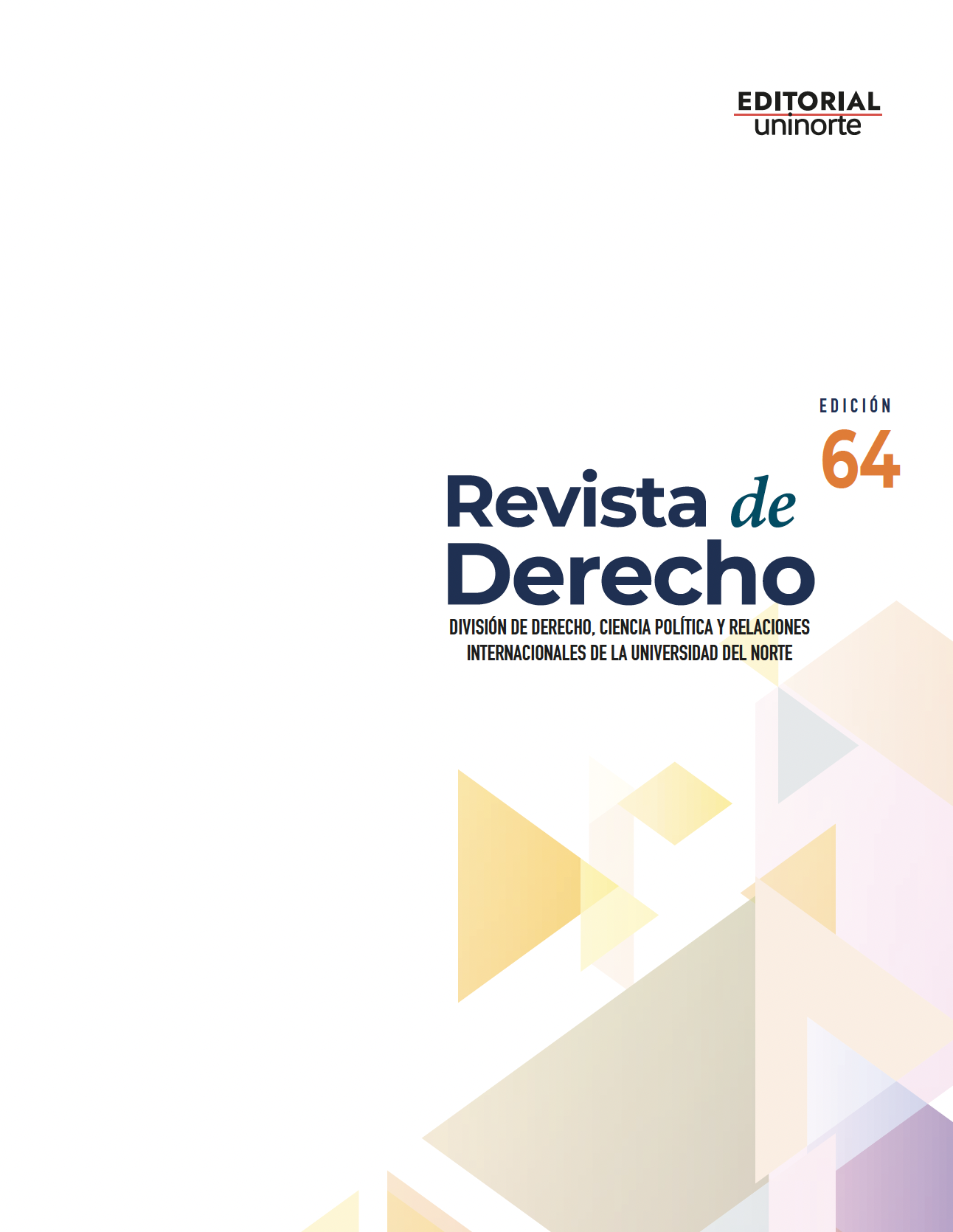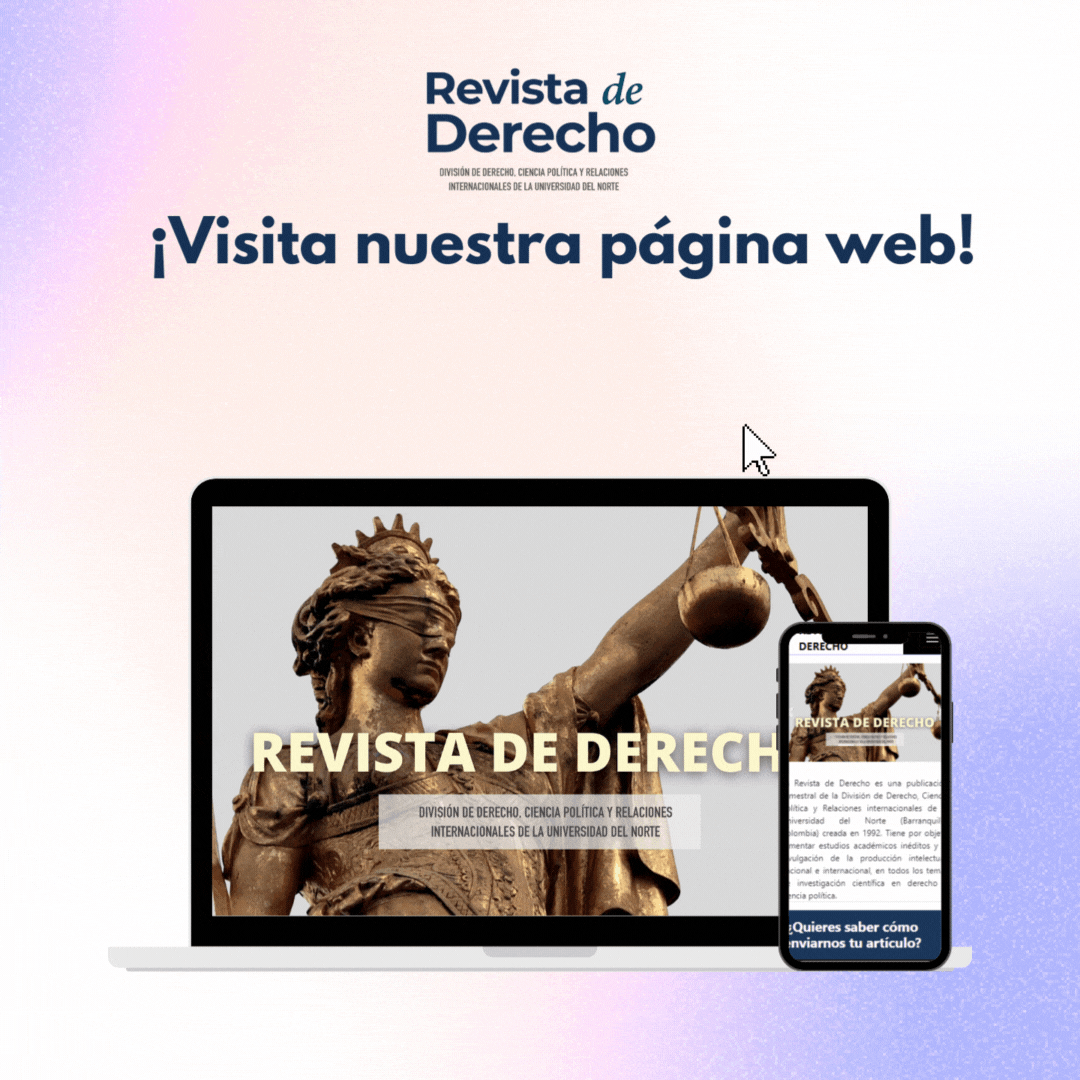Scientific Output on Biocultural Rights: Mapping and Diagnosis Using Bibliometric Methods
Scientific Output on Biocultural Rights: Mapping and Diagnosis Using Bibliometric Methods
Keywords:
Derechos bioculturales, conocimiento tradicional, medio ambienteAbstract
The objective of this article was to analyze the scientific production on biocultural rights through a bibliometric analysis of publications in the Scopus database. The methodology consisted of a search without temporal restriction of information and the use of specialized software to examine co-occurrence of terms, authors and countries related to the topic. The main results include an exponential increase in research since 2004, an initial predominance of anthropological and environmental approaches that have recently given way to more legal and political perspectives, as well as a concentration of production in developed countries versus little research in Latin America. In conclusion, the study provides a complete diagnosis of the state of development of research on biocultural rights but warns of gaps in the actual implementation of these regulations, especially in Latin American megadiverse countries.
References
Anaya, S. J. (2004). International human rights and indigenous peoples: The move toward the multicultural state. Arizona Journal of International and Comparative Law, 21(1), 13-61.
Anker, K. (2021). Regenerative constitutionalism and the politics of biodiversity. London Routledge.
Bavikatte, K. S., Robinson, D., & Oliva, M. J. (2015). Biocultural community protocols: dialogues on the space within. IK: Other Ways of Knowing, 1-31.
Bebbington, D. H., & Bebbington, A. J. (2021). Political ecologies of extractivism: Agendas for change. Routledge.
Boven, K., & Morohashi, J. (Eds.). (2002). Best practices using indigenous knowledge. Nuffic United Nations University.
Gadgil, M., Berkes, F., & Folke, C. (2021). Indigenous knowledge: From local to global: This article belongs to Ambio’s 50th Anniversary Collection. Theme: Biodiversity Conservation. Ambio, 50(5), 967-969.
Garnett, S. T., et al. (2018). A spatial overview of the global importance of Indigenous lands for conservation. Nature Sustainability, 1(7), 369-374.
Girard, F., Frison, C., & Hall, I. (2022). Concluding Thoughts: Biocultural Jurisprudence in Hindsight: Lessons for the Way Forward. In Biocultural Rights, Indigenous Peoples and Local Communities (pp. 314-334). Routledge.
Gudynas, E. (2011). Buen Vivir: Germinando alternativas al desarrollo. América Latina en movimiento, 462, 1-20.
Jonas, H., Bavikatte, K., & Shrumm, H. (2010). Community protocols and access and benefit sharing. Asian Biotechnology and Development Review, 12(3), 49-76.
Kauffman, C. M., & Martin, P. L. (2017). Can rights of nature make development more sustainable? Why some Ecuadorian lawsuits succeed and others fail. World Development, 92, 130-142.
Koons, J. E. (2018). What are biocultural rights? Implications for international law. In I. Feichtner, M.Krajewski & R. Wittmann (Eds.) Human Rights in the Extractive Industries (pp. 343-362). Springer
Krishna, S. (2021). The status of indigenous women’s rights in India. In T. Fenrich et al. (Eds.) The UN Declaration on the Rights of Indigenous Peoples. Oxford University Press.
Lalander, R. (2016). Rights of nature and the indigenous peoples in Bolivia and Ecuador: a Straitjacket for progressive development politics?. Iberoamerican Journal of Development Studies, 5(2), 148-172.
Maffi, L. (2007). Biocultural diversity and sustainability. In J. Pretty, A. Ball, T. Benton, J. Guivant, D. R. Lee, D. Orr, M. Pfeffer & H. Ward (Eds.), The SAGE Handbook of Environment and Society (pp. 267-277). SAGE Publications Ltd.
Morgera, E. (2017). The past, present and future developments and trends of benefit sharing in genetic resources governance. Anthropos: ?asopis Za Interdisciplinarna Istraživanja, 113(1), 201-216.
Morgera, E. (2022). Under the radar: Fair and equitable benefit-sharing and the human rights of indigenous peoples and local communities related to natural resources. Leiden Journal of International Law, 35(2), 191–222.
Posey, D. A. (1999). Cultural and spiritual values of biodiversity. United Nations Environment Programme.
Robinson, D. (2010). Confronting biopiracy: challenges, cases and international debates. Routledge.
Rudas, G. (2013). Dilemmas of the green development model: Mining in Colombia. In H. Haarstad (Ed.), New Political Spaces in Latin American Natural Resource Governance (pp. 147-164). Palgrave Macmillan.
Shrumm, H & Jonas, H. (2012). Biocultural community protocols and conservation pluralism. In P. Sillitoe (Ed.) Indigenous Studies and Engaged Anthropology, (pp.202-228). Routledge.
Sobrevila, C. (2008). The role of indigenous peoples in biodiversity conservation. The World Bank.
Spoon, J. (2018). Biocultural rights: A new paradigm for protecting natural and cultural resources of indigenous communities. New York University Law Review, 294-357.
Varese, S. (1996). The new environmentalist movement of Latin American indigenous people. In E. Genov (Ed.), Environmentalism in Central and Southeastern Europe (pp. 122–134). The Pannonia Press
Vidal, S. M. (2020). Traditional peoples’ lands, Amazon and Buen Vivir: Concepts and contexts. Land Use Policy, 99.
Wegorowski, P. (2022). Recognizing biocultural rights in India: Too radical or not enough? Human Rights Review, 23(3), 513-534.
Downloads
Published
Issue
Section
License
Los artículos publicados en la Revista de Derecho y todo su contenido se encuentran bajo licencia Creative Commons CC BY. Creative Commons Attribution 3.0.








